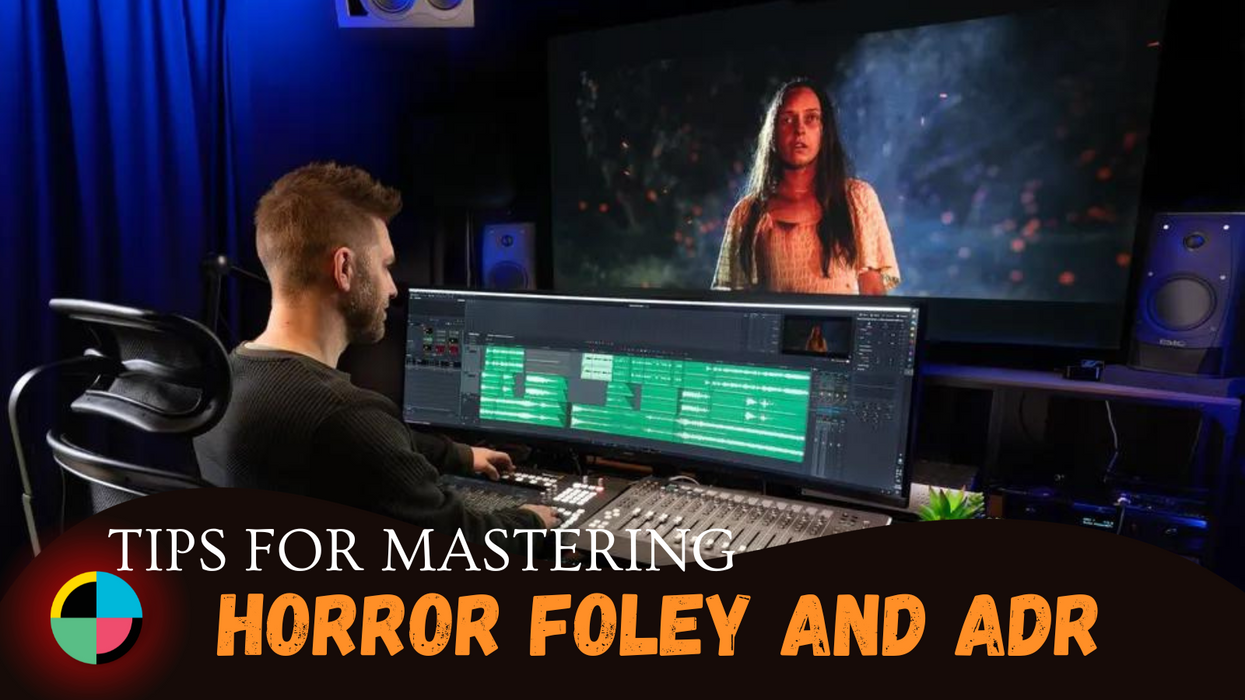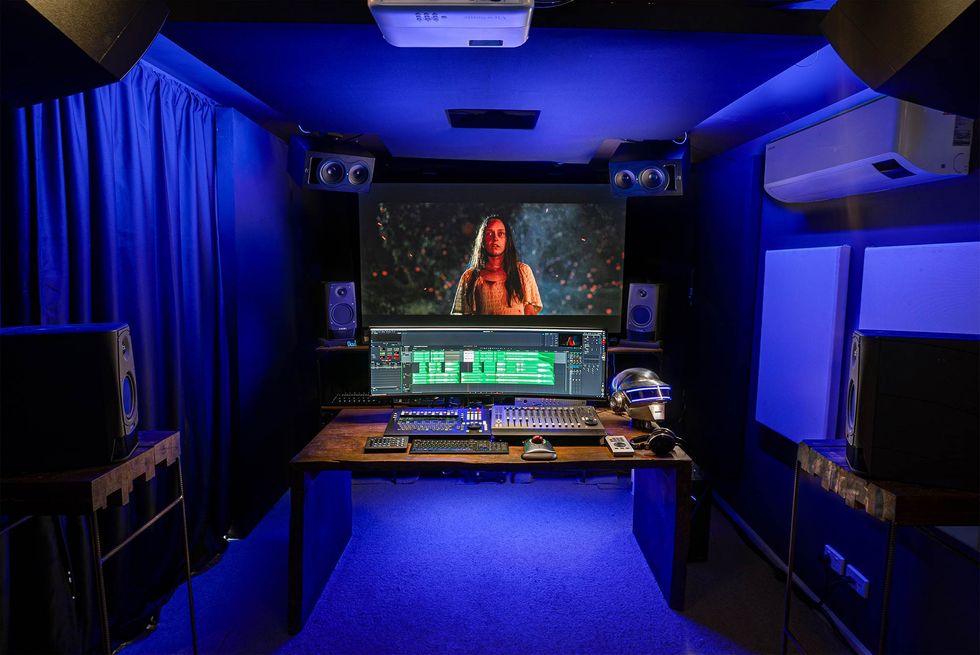Tips for Editing Horror Foley and ADR From the ‘Godless: The Eastfield Exorcism’ Team
An interview with supervising sound editor Benni Knop about how he and his team were able to balance horror and true crime elements for their Fantastic Fest standout feature.

Behind the audio from 'Godless: The Eastfield Exorcism'
As someone who sat through dozens of horror features and shorts at this year’s Fantastic Fest (Alamo Drafthouse’s signature genre film festival in Austin, Texas) can tell you, there’s something extra-terrifying about the films based on real-life events.
We all love the over-the-top schlock of course, but Godless: The Eastfield Exorcism is a great example of how sometimes a true crime and psychological thriller can amplify a film’s genre horror elements.
Directed by filmmaker Nick Kozakis, Godless was inspired by the true story of a woman pushed to seek treatment by a group of religious zealots to treat her mental illness as a demonic possession.
And while this indie horror-thriller stands out for many reasons, even in the midst of a particularly strong Fantastic Fest lineup this year, its sound design helped to provide a horrific and compelling underbelly to the story.
We chatted with Benni Knop, the supervising sound editor on the film, about his work editing the ADR and foley for this horror project, as well as to explore how he was able to use Fairlight Desktop Audio Editor to mix the film for the big screen.
No Film School: Can you tell us a bit about your background in sound editing and how you became involved with this project?
Benni Knop: I began at the age of 16 as a musician playing, recording, and mixing music. After working in corporate settings doing audio post-production I started working freelance at the same time to scratch my creative itch. My second major project I worked on was Nick Kozakis' first feature film Plague released in 2014 and I've been working with him and Visible Studios ever since. If you are a pleasure to work with and give all your projects your best, good clients will keep coming back.

Benni Knop from Noisy Post
Credit: Noisy Post
NFS: What were some of your sound inspirations for the film? Did you re-watch any other horror or thriller films for ideas?
Knop: Although most of the feature films I've worked on are horror, I've never been much of a follower of the genre. The film isn't your typical horror, I felt like it was more of a psychological thriller tackling heavy themes such as violence against women. I took some inspiration from shows like The Sinner, You, and Hannibal but I try to tackle each project with "fresh ears" and approach them with unique ideas.
NFS: Tell us a bit about what software and tools you and the team used for the sound editing process.
Knop: My team of four sound editors and foley artists used different DAWs and plugins to achieve their part of the project. They provided sounds for the film using a combination of unique sounds they recorded and some from sound libraries they own. We brought all their sound edits into my DAW using AAFs. I did all the dialogue editing, ADR recording, sound design, and re-recording mixing in Davinci Resolve Fairlight using Blackmagic Design's Fairlight Audio Editor and Desktop Console. They dramatically sped up my workflow and ran seamlessly with Davinci Fairlight. They were also fun to work with over a mouse and keyboard. I personally use SoundQ by Pro Sound Effects for organizing and searching my sound libraries.

'Godless: The Eastfield Exorcism'
Photo provided
NFS: How have you seen the world of sound in film evolving and changing in recent years? Do you see any trends coming for the future?
Knop: From the time I began working in audio post-production for film the technology has grown in leaps and bounds. The amount of affordable plugins, sound libraries, software, and hardware now at your disposal makes building soundscapes easier, cheaper, and faster. You now have the ability to work on a feature film with 100s of tracks on a laptop. Although mixing a film in surround sound or Dolby Atmos requires a specialized mix room you can do all your dialogue editing, sound design, and pre-dubs (pre-mixing) on a laptop to dramatically reduce your budget.
NFS: With horror (and, for this film, true crime) have you found any signature audio or sound tricks you'd like to share?
Knop: This isn't a sexy answer but I think one overlooked aspect of the audio post process for sound designers working on independent films is foley. We spent a lot of time layering our scenes where Lara is being antagonized to give the viewers a real sense of her experience, every touch of her skin, the burning ropes on her wrists, the creaking chair as she tried to escape and her body breaking under the struggle of her captors. Most viewers of your film don't notice the foley while watching but when it's not there they feel something is missing. Foley helps convince the viewer of what they are seeing.

The audio editing setup for 'Godless: The Eastfield Exorcism'
Credit: Benni Knop
NFS: If you could give advice to any up-and-coming filmmakers looking to work on horror projects of their own, is there any advice you could give them to help them get out there and get started on their own projects?
Knop: Don't feel the need to go out and buy all the latest gear and plugins when starting out. Get Davinci Resolve Fairlight (it's free!) as your DAW and a microphone or recorder and start recording and creating sounds. Getting that first project is hard when you don't have the experience or showreel to share so I released a product this year that I wish I had when I was starting out called 'Practice Productions'. They are professionally produced short films where you can practice dialogue editing, sound design, and re-recording mixing. You get an AAF File which is the file you get from the video editor and the MP4 of the film and best of all you can use this in your showreel to get that first gig. Head to noisypost.com.au for more information and check out my YouTube channel for free tutorials at youtube.com/benniknop.












